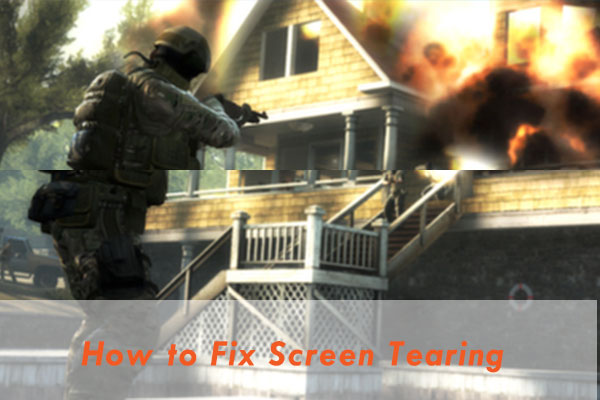Have you ever experienced distracting lines, stutters, or jagged edges while playing games or watching videos on your computer or mobile device? This annoying phenomenon, known as screen tearing, can severely hamper your visual experience and disrupt your immersion. Fortunately, there are several effective methods to fix screen tearing and restore seamless motion to your digital displays.

Image: www.vssmonitoring.com
What Causes Screen Tearing?
Screen tearing occurs when the refresh rate of your display does not synchronize with the frame rate of the content you are viewing. When your GPU renders new frames faster than your monitor can refresh them, the result is a disjointed visual experience where the画面 is essentially torn into two or more sections.
8 Proven Solutions to Eliminate Screen Tearing
1. Enable VSync
VSync (Vertical Synchronization) is the most straightforward solution to prevent screen tearing. It synchronizes the frame rate of your GPU with the refresh rate of your display, ensuring that new frames only get rendered when the screen is ready to display them. While VSync can effectively eliminate tearing, it may introduce input lag, so experiment with it carefully.

Image: www.partitionwizard.com
2. Cap Your Frame Rate
If VSync introduces noticeable input lag, you can try capping your frame rate slightly below your monitor’s refresh rate. This helps reduce the chances of the GPU outpacing the display, minimizing tearing while minimizing input delay.
3. Turn on Triple Buffering
Triple buffering acts as a buffer between your GPU and display, storing three frames instead of the usual two. This provides the GPU with more headroom to avoid exceeding the display’s refresh rate, further mitigating screen tearing.
4. Update Your Graphics Driver
Outdated graphics drivers can cause various graphical glitches, including screen tearing. Ensuring that you have the latest drivers installed for your GPU can often resolve these issues. Check the manufacturer’s website for the most up-to-date drivers.
5. Check Cable Connections
Faulty or loose cable connections can disrupt the signal transmission between your device and display, causing tearing. Inspect all cables involved in the connection, including the DisplayPort or HDMI cable, and ensure they are securely plugged in.
6. Adjust Monitor Settings
Some monitors have settings that can affect screen tearing, such as Overdrive or Response Time settings. Adjusting these settings may reduce tearing, but experimentation is necessary to find the optimal combination for your particular display.
7. Force Full Screen Mode
If screen tearing persists in windowed mode, try running games or applications in full screen exclusive mode. This gives the game more direct control over the display and can help prevent tearing.
8. Upgrade Your Monitor
If none of the above methods resolve the screen tearing issue, it may be necessary to upgrade your monitor to one with a higher refresh rate. A higher refresh rate means the display can handle more frames per second, which significantly reduces the chances of tearing.
How To Fix Screen Tearing
Conclusion
Screen tearing can be a frustrating issue, but the solutions outlined above provide effective способы to restore seamless visuals to your screens. By experimenting with different methods and identifying the most suitable one for your setup, you can eliminate screen tearing and fully immerse yourself in the world of gaming, movies, or video creation.